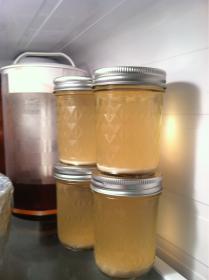A full Pint = 473 mL (from the calculator I am using....varies on what country you are in, for what a "Pint" is)
So a half pint is 260 ish.... lets say you can actually fit 125 mL of slurry in a half pint jar, with wort on top. Also - this is washed yeast.
The Mr. Malty calculator says not to go below 10% for a "non-yeast percentage" with washed yeast. Lets be conservative and say washing yeast is hard, and you are at 20% non-yeast.
I'm leaving the yeast concentration slider in the middle. Defaults are good. I don't know what thin or thick slurry is.
I harvested my yeast 1 week ago, to use today. That makes the viability at 83%.
For a 1.048, 5 gallon batch, I would need 98 mL of slurry. Lets round that up to 120 mL. That 22 mL increase, increases the estimated yeast count from 168 billion, to 207 billion. Everyone here agrees it is hard to estimate the number of viable yeast cells in your slurry, so over estimate.
This still means if you are using a half pint jar, depending on the measurement of actual washed slurry, you should be good. Technically, if it is only a week old and using these calculations, it is equal to a new yeast vial that has had a starter. If its older then a week, you may want to use less and use a starter, whatever. (And most will say here, always use a starter)
But depending on your method, half a pint jar is fine, and could be setup to be ready for a 5 gallon batch.




